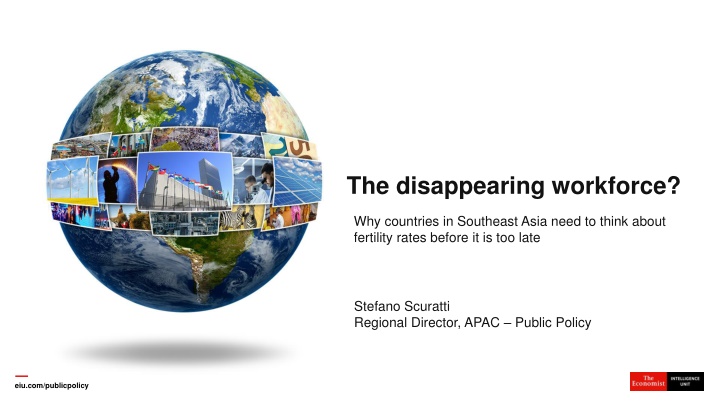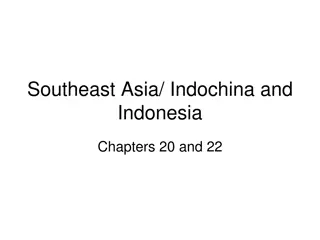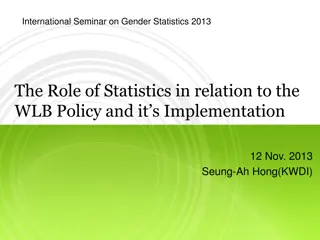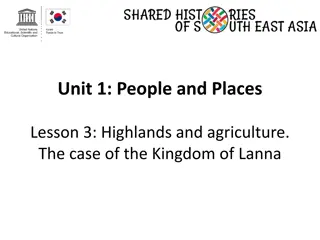The Disappearing Workforce in Southeast Asia: Why Fertility Rates Matter
Southeast Asia is facing a decline in fertility rates, leading to significant workforce challenges, increased healthcare costs, and changing family dynamics. Countries like Thailand are already feeling the impact, with projections showing a diminishing working-age population. Factors like population policies, urbanization, workforce participation, and socio-cultural shifts contribute to this trend, highlighting the urgent need for strategic solutions to address the implications of declining fertility rates.
Download Presentation

Please find below an Image/Link to download the presentation.
The content on the website is provided AS IS for your information and personal use only. It may not be sold, licensed, or shared on other websites without obtaining consent from the author.If you encounter any issues during the download, it is possible that the publisher has removed the file from their server.
You are allowed to download the files provided on this website for personal or commercial use, subject to the condition that they are used lawfully. All files are the property of their respective owners.
The content on the website is provided AS IS for your information and personal use only. It may not be sold, licensed, or shared on other websites without obtaining consent from the author.
E N D
Presentation Transcript
The disappearing workforce? Why countries in Southeast Asia need to think about fertility rates before it is too late Stefano Scuratti Regional Director, APAC Public Policy eiu.com/publicpolicy
EIU Public Policy Mobile We harness the capabilities of The Economist Group to amplify your message. Research & analysis Apps Part of The Economist Group, we provide independent, evidence-based insights through applied intelligence. Public Policy consulting Data Visualisation Content & Events Special Publications Media & amplification Podcasts eiu.com/publicpolicy
The fertility rate of Southeast Asia has drifted from 5.5 in 1970 down to 2.4 in 2015 and continues to fall Total fertility rate of Southeast Asian countries from 1970 to 2100 (TFR; children per woman) eiu.com/publicpolicy
Thailands fertility rate is among the lowest in Southeast Asia, at 1.58 Population pyramid of Thailand (in thousands) eiu.com/publicpolicy
Rapid declines in fertility rates put pressure on countries workforce, healthcare cost, and family dynamics The National Economic and Social Development Board projects that, between 2015 and 2035, Thailand's workforce, those aged 15-59 years old, will fall by about 6m to 37m. The Lancet projects that Thailand s national healthcare spending will rise from 4.1% of GDP in 2014 to 4.7% in 2040 Families will increasingly be pressured to care for both the young and the old, in absence of significant welfare support, adding pressure to working-age individuals. eiu.com/publicpolicy
The fall is due to population policies, urbanisation, workforce participation, and socio-cultural changes Regional focus on fertility reduction in the 1970s and 1980s and uneven responses in the following decades (e.g. Thailand s National Family Planning Programme). Population policies Southeast Asia has seen rapid urbanisation and development. This comes with higher cost of living and smaller dwellings. Urbanisation Improvements in women s education had increased female participation in the workforce, meaning that many women postpone childbirth in order to pursue economic opportunities. Workforce participation Socio-cultural changes A shift from quantity to quality motivates the desire for a smaller family size. eiu.com/publicpolicy
Governments are using three sets of policy levers to reverse population decline Tax reliefs and cash incentives for childbirth Marriage and parenthood package Subsidised child care Housing subsidies Financial relief Health promotion programmes on factors affecting fertility Education on fertility preservation, family planning Awareness and access Relaxing population control and family planning Maternity protection and parental leave entitlements as basic rights Workplace regulations for work-life balance Family friendly policies eiu.com/publicpolicy
Four factors will play a key role in determining the impact of population dynamics in Southeast Asia Migration Welfare systems Changes in productivity Education and skills The economic impact of falling fertility rates and population ageing will depend on effective financial planning for retirement. Declining population numbers have a negative impact on economic growth. However, automation and AI will play a role in determining the optimal size of the working population to sustain society. An adequate demographic profile will need to be supplemented by the development of a workforce that has the right skills for the jobs of the future. Replacement migration can provide countries of destination with needed human resources and talent but it should be managed carefully to avoid social tensions. eiu.com/publicpolicy
Contact us With 18 offices worldwide, EIU Public Policy is truly a global business. Stefano Scuratti Regional Director, APAC stefanoscuratti@economist.com Speak to one of our experts today: London: +44 (0)20 7576 8000 Singapore: +65 6534 5177 New York: +1 212 541 0500 eiu_enquiries@eiu.com eiu.com/publicpolicy























